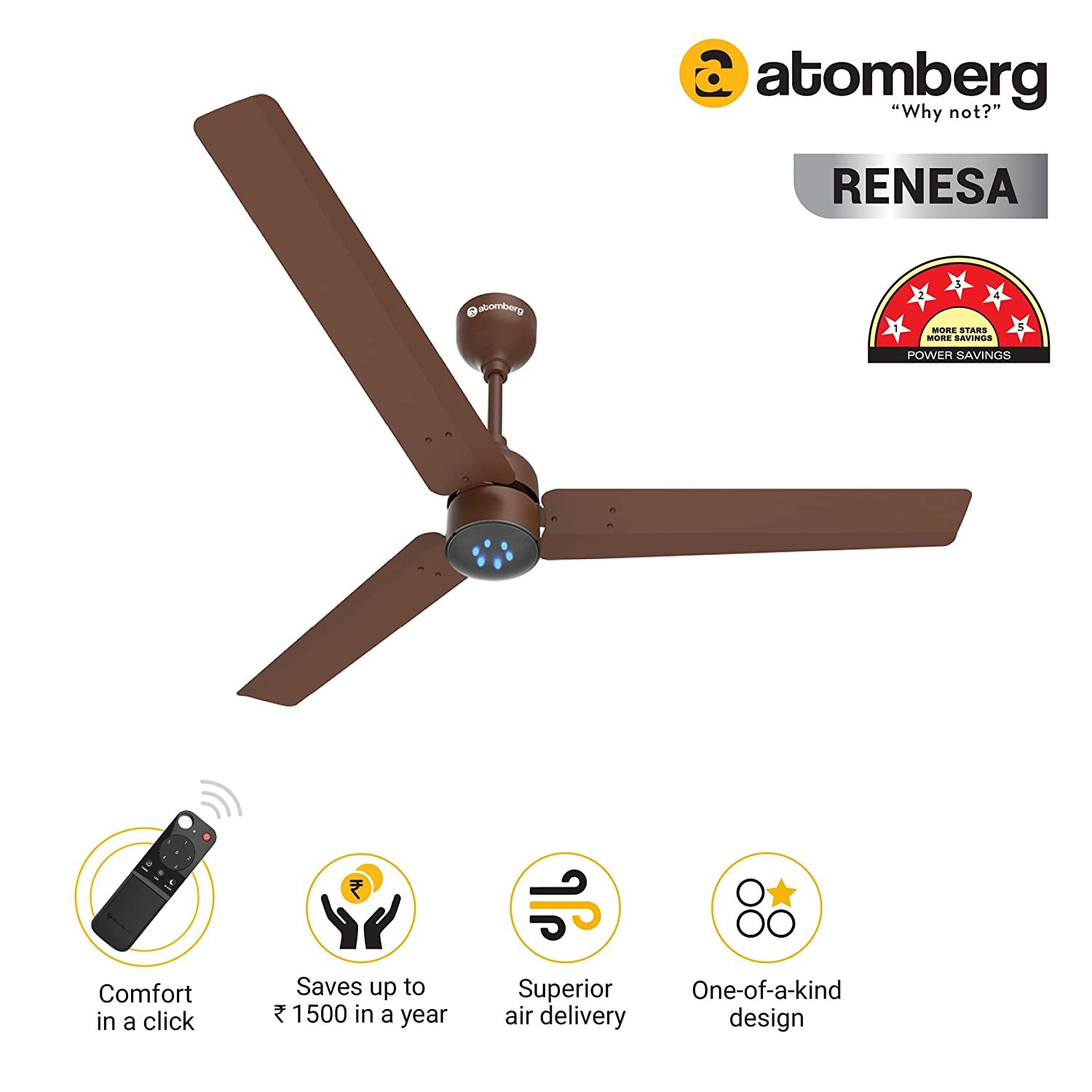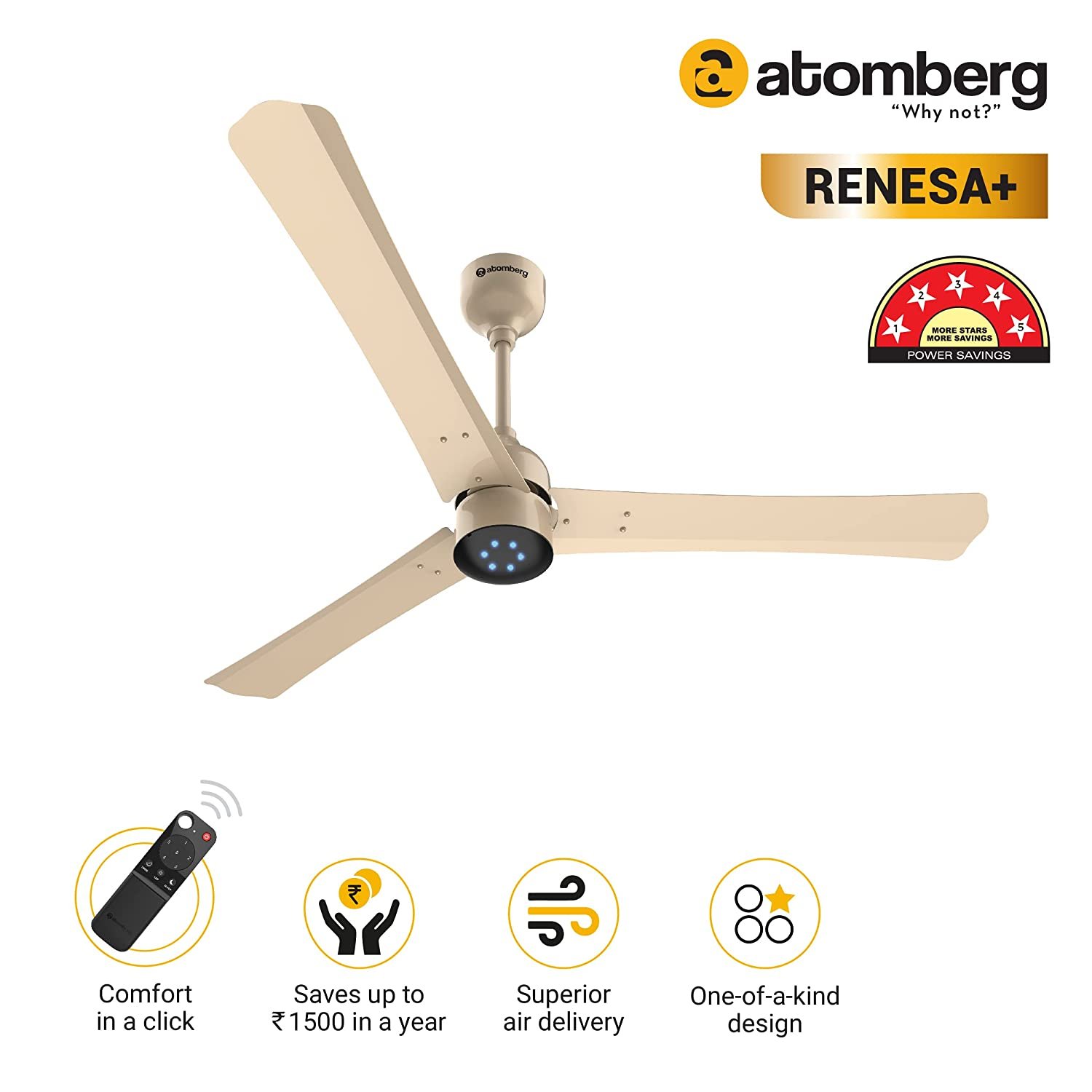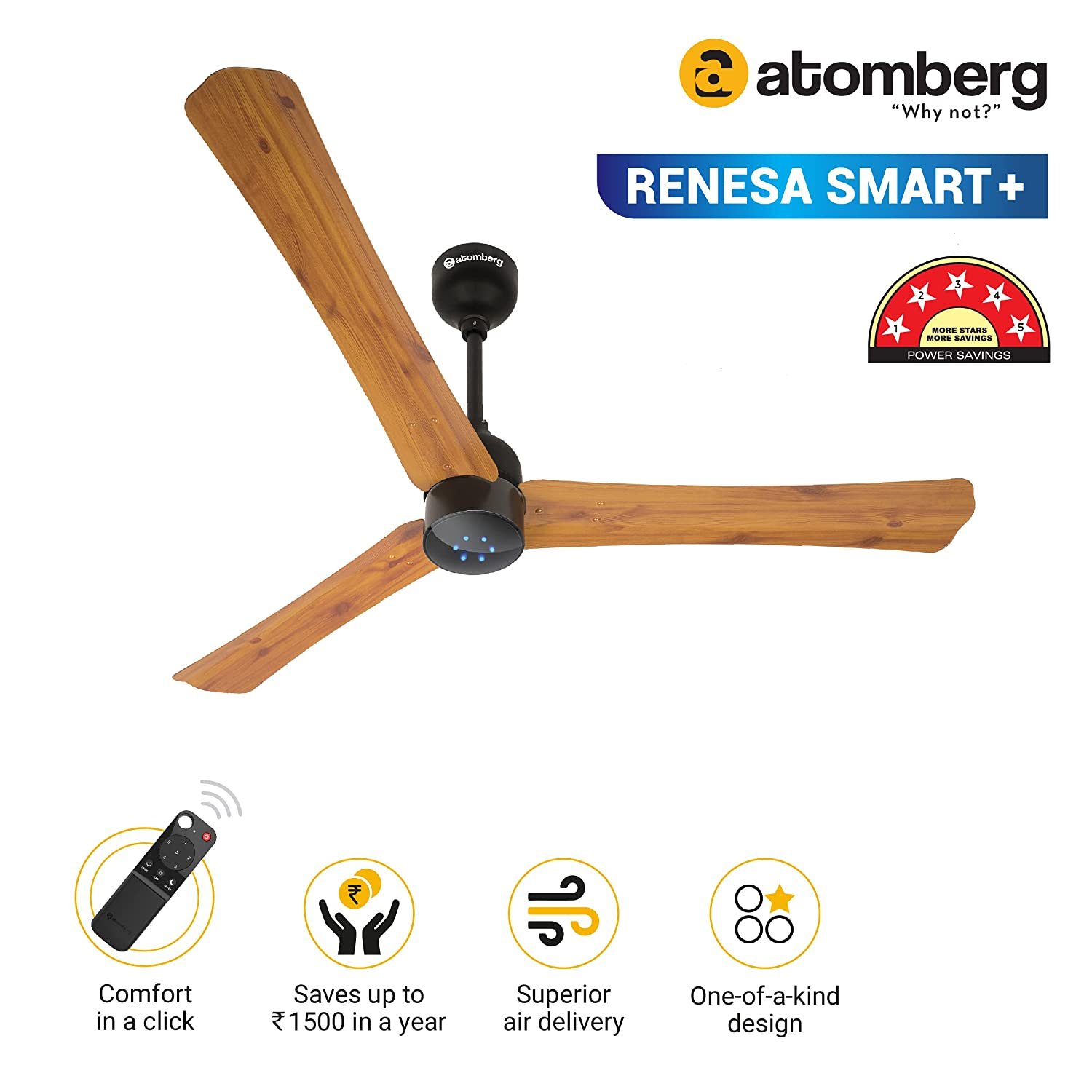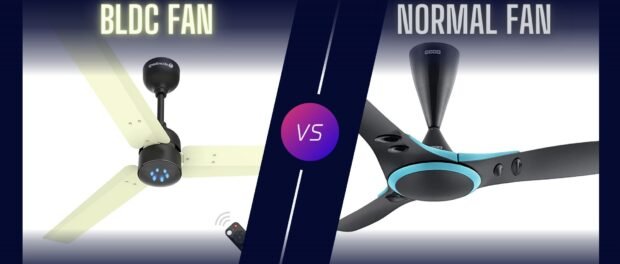BLDC Fans vs Normal Fans: A Comprehensive Comparison
Table of Contents
BLDC Fans vs Normal Fans:
The world of fans has come a long way from the traditional fans we once knew. With the advent of technology, fans have become more efficient, powerful, and longer-lasting. The Brushless Direct Current (BLDC) fans are the latest addition to this ever-evolving world of fans. But what makes them different from normal fans? In this article, we’ll be comparing BLDC fans and normal fans, highlighting their similarities and differences, and discussing which one is better for various applications.
What are BLDC Fans?
The full form of BLDC is brushless direct current. BLDC fan means, a BLDC ceiling fan BLDC motor is used as compared to an induction motor in a regular ceiling fan.
The major advantage of the BLDC fan is its low power consumption. In general, the BLDC fan’s power rating is about 30 watts while the regular fan’s wattage is more than 60 Watts. Other than this there are much more advantages of BLDC fans over normal fans which we will discuss one by one. Before that, we should know why BLDC fans consume less power and how they work.
BLDC Fan Technology-Why BLDC Fan Consumes Less Power and How they Work?
As Its name suggests, BLDC means brushless direct current. It means BLDC fans use a DC motor that is brushless. Now What is brushless? If you study DC motor you can find that in DC motor through a commutator, we change the direction of current in the rotor through a carbon brush. And in the new technology, we change the direction of current through an electronic circuit in a BLDC motor instead of a carbon brush. So it is brushless.
Now we look for working of a BLDC fan,
Working of BLDC Fan:
Since It consists of a DC motor we need an SMPS to convert AC to DC. Now the DC supply goes to the microcontroller which actually controls and operates the BLDC motor.

Being brushless and having a microcontroller BLDC fan have a lot of advantages over regular fans. On the other side, there are also some disadvantages. So now, here I will discuss all the aspects of a fan and a comparison of both.
In-Depth Comparison between BLDC and Normal Fans
The performance of any device or appliance can be compared to many parameters. In our case, these are Power consumption, Technology, Air Delivery, Noise Level, Speed Control, Maintenance, etc. Let’s discuss each one by one.
Power Consumption-Energy Efficiency
In terms of power consumption BLDC fans are far ahead of normal fans. And it is the most noticeable advantage of BLDC fans. BLDC fans are much more efficient than normal fans, as they consume less power and generate less heat. If we compare more precisely a BLDC fan consumes around 30 watts while a general fan consumes more than 60 watts.
Some of the BLDC fans consume only 28 watts at full speed and lower at a lower speed.
Further, we will understand the power of BLDC fans with the below example. Typical fans consume 70-80 Watts, while BLDC fans only consume 28-40 Watts on average, substantially reducing electricity bills. For instance, a 28 Watt BLDC Motor fan could result in savings of Rs.1500-2000 annually, which is noteworthy for Indian households.
Suppose you operate the fan for 14 hours daily. In that case, a conventional fan(65 watts) would consume 14×65=910 Watt-hour or 0.91unit whereas a BLDC fan(28 watts) would consume only 14×28=392 watt-hour or 0.392 units, that saving (0.91-0.392)= 0.518 units daily. If we calculate for a month it would be 30×0.518=15.54 Units. Considering an average electricity charge of Rs. 6 per unit, this would yield savings of Rs. 3.108 per day, accumulating to Rs. 93.24 monthly.
If it seems not much just remember that this is the saving of just one fan. If a house has 4 Fans then this would be 372.96 monthly and 3357 annually(considering on average a family uses a fan for 9 months every year excluding winter).
Not only this, BLDC fans consume even less power if you operate them at a lower speed. The below table will blow your mind. Here is the BLDC fan power consumption vs regular fan power consumption at a different speed.
| Speed of the Fan | BLDC Fans Power Consumption | Normal Ceiling Fan Power Consumption |
| 1 | 3.8 Watts | 13 Watts |
| 2 | 7.7 Watts | 24 Watts |
| 3 | 13.8 Watts | 40 Watts |
| 4 | 22.7 Watts | 56 Watts |
| 5 | 35.8 Watts | 70 Watts |
Air Delivery and Coverage
In terms of air delivery, you will find no significant difference. Although BLDC fans claim high-air delivery
and more coverage it is not noticeable. If we talk quantitatively Atomberg BLDC fan having a sweep size of 1200mm claims an air delivery of 235 m3/min while the Usha normal fan claims an air delivery of 230 m3/min.
Noise Level
BLDC fans are much quieter compared to normal fans. The brushless design eliminates the mechanical noise generated by the brush and commutator in normal fans. This makes BLDC fans ideal for bedrooms, offices, or any space where you need a peaceful and quiet environment. If we rate it in terms of noise level then the BLDC fans will get 5 stars while the normal fan will get 2 stars.
Speed Control
To control the speed of the normal fan you need to install the regulator with the fan. and now the regulator is also of three types. You need to choose one of them which adds an extra cost to the fan, While in BLDC fan you get a remote through which you can control the speed of the fan in a very convenient way. There are some BLDC fans that support IoT that is you can control the speed of the fan through the mobile app or voice assistant such as Google Assistant or Alexa. Due to microcontroller-based speed control, BLDC fans offer more precise speed control compared to normal fans, which results in better air delivery and flow
Maintenance and Durability
BLDC fans are maintenance-free and have a longer lifespan compared to normal fans. The brushless design eliminates the need for regular maintenance, such as brush and commutator replacements. This also reduces the likelihood of failure and makes BLDC fans more durable in the long run. On the other hand, if got defective it requires technical expertise to repair or replace parts, making it challenging to repair without professional help.
Smart Options
With technological advancements, BLDC fans now come with smart features like remote control, sleep mode, timer, LED lights, etc. Because It comes with a microcontroller many more smart features are available with BLDC fans. Such as:
- Remote Control
- Mobile App Control
- IoT Enabled
- Sleep Mode
- LED Lights
- Voice control etc…
Pricing
BLDC fans are initially more expensive compared to normal fans, but they offer significant savings in the long run. The lower energy consumption, longer lifespan, and reduced maintenance costs make BLDC fans a more cost-effective solution compared to normal fans.
A normal fan comes in a price range of 1300 to 4500 while a BLDC fan comes in the range of 2800 to 7500. The actual price will depend on what you choose. the size, and the features of the fan.
BLDC Advantages and Disadvantages
Comparison summary:
Our Pick
BLDC Fan |
Traditional
Normal Fan |
|
|---|---|---|
| Power Consumption-Energy Efficiency | Excellent | Poor |
| Air Delivery and Coverage | Excellent | Excellent |
| Noise Level | Very Less | Noisy |
| Speed Control | Excellent | Poor |
| Maintenance and Durability | Excellent | Good |
| Smart Options | Excellent | Not at all |
| Pricing | High | Low |
Recommended BLDC Fans
Atomberg Renesa 1200mm

- Power rating 28 Watts
- Voltage between 140-285V
- Speeds upto 360 RPM
- Air delivery 235 CMM
Atomberg Efficio 1200mm

- Power rating 28 Watts
- Voltage between 140-285V
- Speeds upto 380 RPM
- Air delivery 235 CMM
Atomberg Renesa+ 1200mm

- Power rating 28 Watts
- Voltage between 140-285V
- Speeds upto 360 RPM
- Air delivery 240 CMM
Atomberg Renesa Smart +

- Power rating 28 Watts
- IoT Enabled- Alexa, Google Home
- Voltage between 140-285V
- Speeds upto 360 RPM
- Air delivery 235 CMM
Havells Ambrose 1200mm

- Power rating 32 Watts
- Voltage between 140-285V
- Speeds upto 350 RPM
- Air delivery 225 CMM


Perfect. Very helpful.
it’s really meaningful comparison, nice blog
Amazing Content Format, Easy to Read and Understand. Thanks For Sharing.